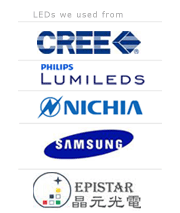News
Search
Popular search



As flip chip technology gradually matures, global LED manufacturers are actively developing the technology. Flip chip technology flips over the LED in a face down orientation and places the electrode on LED chips into direct contact with substrates. This technology gives LED chips advantages that include a larger light-emitting area, better heat dissipation, and does not require wire-bonding. Flip chip technology was one of the most popular topics at the LED Taiwan’s, Semiconductor Equipment and Materials International (SEMI), 2013 Automation Technology for Solid State Lighting Workshop on Sept. 5, 2013. Taiwan’s Industrial Technology Research Institute (ITRI) presentation at the workshop was on low temperature eutectic die-bonding technology, while Epistar Co. discussed its phosphor sheet technology.
As large international lighting brands including Philips Lumileds and Cree begin flip chip technology applications, Taiwan manufacturers have also started to develop this technology. In addition, flip chips outshine average LED chips in light emitting area, heat dissipation, and has other advantages including wire-bonding free and its small size. Both large upstream Taiwanese chip manufacturers, Epistar Co., FOREPI, Genesis Photonics Inc. and downstream manufacturers, such as Everlight have started manufacturing flip chips.
At the workshop, Everlight’s R&D Manager Johnny Lu shared the company’s phosphor sheet technology. Phosphor is mixed with glue, and the phosphor is pasted onto the flip chip for cutting. Compared to conventional dispensing and spraying methods, the phosphor sheets have higher uniformity, including optimized color uniformity and brightness. Phosphor sheets on a layer on top of the flip chip, and the packaging process still requires the use of ceramic substrates.
The phosphor sheet technology was also tested on SMD chips, said Lu. However, from a cost perspective there is limited benefits from using phosphor sheet technologies on SMD chips as package manufacturers phosphor dispensing and spraying technology matures. Therefore, Everlight’s phosphor sheet technology is mainly focused on flip chip packaging.
Low temperature eutectic die-bonding technology was also presented at the workshop by Huang Meng-Chi, Manager, Advanced Lighting Module Division, Mechanical and Systems Research Laboratory, ITRI. The die-bonding technology fixes the LED chip on a lead frame or ceramic substrate. The die-bonding layer is a decisive influence in LED heat dissipation, and the material used for euctectic die-bonding will affect the LED product’s reliability. The ITRI low temperature euctectic die-bonding material and manufacturing process achieved advantages including high heat dissipation, low costs and high volume productions. In addition, the manufacturing process is done under 100 degrees Celsius, and the euctectic die-bonding material costs much lower than current available materials.
Huang pointed out, ITRI is cooperating with two major Taiwanese LED manufacturers to develop this euctectic die-bonding technology. The technology will help Taiwanese manufacturers break the technological bottleneck of silver-paste die bonding’s disadvantageous poor heat dissipation features. At the same time, international manufacturers are applying low-cost Gold-tin (AuSn) solders for die attach, which is suitable for flip chip production.



